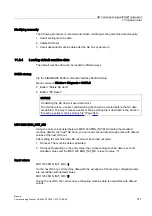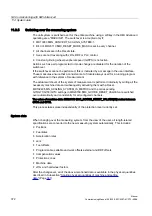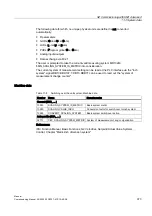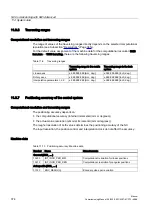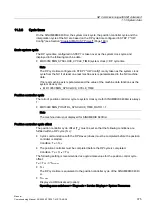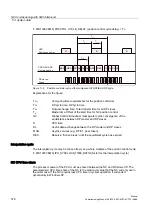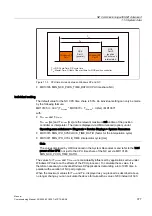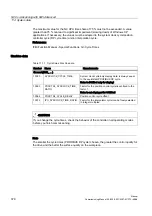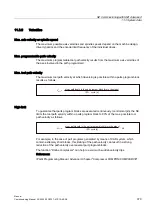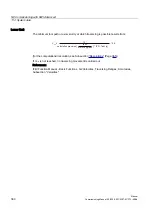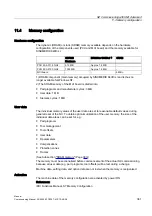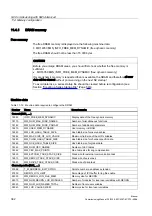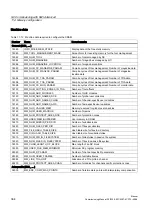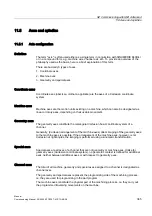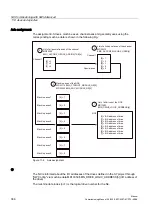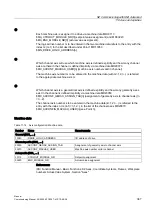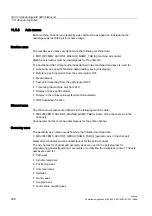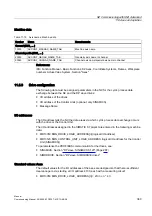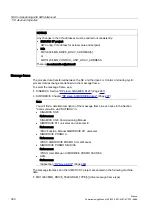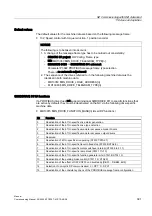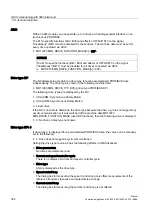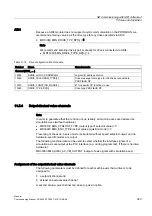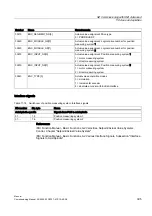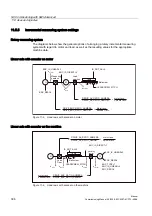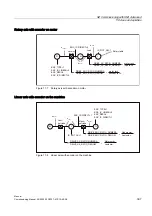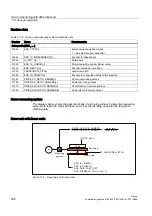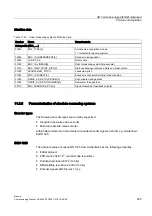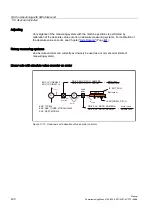
NC Commissioning with HMI Advanced
11.5 Axes and spindles
Manual
Commissioning Manual, 05/2008, 6FC5397–4CP10–4BA0
385
11.5
Axes and spindles
11.5.1
Axis configuration
Definition
The term "axis" is often used either as a single term in conjunction with SINUMERIK 840Disl
or in a compound form, e.g. machine axis, channel axis, etc. To provide an overview of the
philosophy used as the basis, here is a brief explanation of this term.
There are basically 3 types of axes:
1.
Coordinate axes
2.
Machine axes
3.
Geometry and special axes
Coordinate axes
Coordinate axes (abscissa, ordinate, applicate) are the axes of a Cartesian coordinate
system
Machine axes
Machine axes are the motion units existing on a machine, which can also be designated as
linear or rotary axes, depending on their usable movement.
Geometry axes
The geometry axes constitute the rectangular Cartesian basic coordinate system of a
channel.
Generally, (Cartesian arrangement of the machine axes) direct imaging of the geometry axes
to the machine axes is possible. If the arrangement of the machine axes, however, is not
Cartesian at right angles, the imaging is performed using a kinematic transformation.
Special axes
Special axes are all axes of a channel that are not geometry or machine axes. Unlike for
geometry axes (Cartesian coordinate system), no geometric context is defined for additional
axes, neither between additional axes or with respect to geometry axes.
Channel axes
The total of all machine, geometry and special axes assigned to a channel is designated as
channel axes.
The geometry and special axes represent the programming side of the machining process,
i.e. they are used for programming in the part program.
The machine axes constitute the physical part of the machining process, i.e. they carry out
the programmed traversing movements on the machine.

